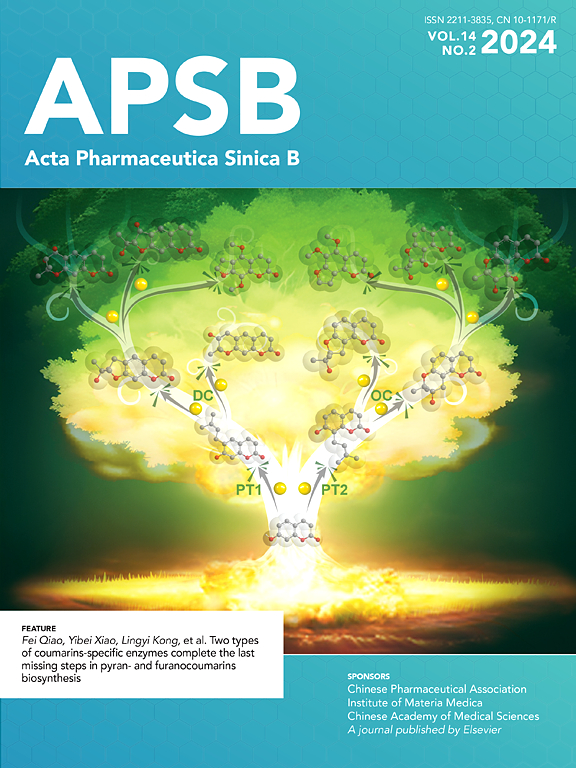Modulating active targeting nanoparticle design according to tumor progressions
IF 14.7
1区 医学
Q1 PHARMACOLOGY & PHARMACY
引用次数: 0
Abstract
Targeting drug delivery systems mediated by nanoparticles has shown great potential in the diagnosis and treatment of cancer. However, influences of different tumor progressions on the accumulation of nanoparticles, especially the ligand-modified active targeting nanoparticles are seldom exploited. In this work, the accumulation and penetration of RGD-modified gold nanoparticles (active AuNPs) with different sizes were investigated in orthotopic breast cancer with different tumor progressions. The results showed that the smallest active AuNPs had better accumulation and permeation effects in early tumor tissues with the relatively looser extracellular matrix, larger gaps, lower interstitial fluid pressure, and less receptor expression, which was due to size effects. However, the larger active AuNPs had better accumulation and penetration effects in late tumor tissues with highly expressed target receptors integrin αvβ3 because of the multivalent interactions between larger active nanoparticles and integrin αvβ3. In the midterm, tumor accumulation of active AuNPs was equally influenced by size effects and multivalent interactions. Therefore, RGD-modified nanoparticles with sizes of 7 and 90 nm accumulated more in tumors. This study will guide a rational design of active targeting nanoparticles for enhancing the diagnosis and treatment of tumors based on their progressions.

求助全文
约1分钟内获得全文
求助全文
来源期刊

Acta Pharmaceutica Sinica. B
Pharmacology, Toxicology and Pharmaceutics-General Pharmacology, Toxicology and Pharmaceutics
CiteScore
22.40
自引率
5.50%
发文量
1051
审稿时长
19 weeks
期刊介绍:
The Journal of the Institute of Materia Medica, Chinese Academy of Medical Sciences, and the Chinese Pharmaceutical Association oversees the peer review process for Acta Pharmaceutica Sinica. B (APSB).
Published monthly in English, APSB is dedicated to disseminating significant original research articles, rapid communications, and high-quality reviews that highlight recent advances across various pharmaceutical sciences domains. These encompass pharmacology, pharmaceutics, medicinal chemistry, natural products, pharmacognosy, pharmaceutical analysis, and pharmacokinetics.
A part of the Acta Pharmaceutica Sinica series, established in 1953 and indexed in prominent databases like Chemical Abstracts, Index Medicus, SciFinder Scholar, Biological Abstracts, International Pharmaceutical Abstracts, Cambridge Scientific Abstracts, and Current Bibliography on Science and Technology, APSB is sponsored by the Institute of Materia Medica, Chinese Academy of Medical Sciences, and the Chinese Pharmaceutical Association. Its production and hosting are facilitated by Elsevier B.V. This collaborative effort ensures APSB's commitment to delivering valuable contributions to the pharmaceutical sciences community.
 求助内容:
求助内容: 应助结果提醒方式:
应助结果提醒方式:


